Living near coyotes can be a wild experience in the truest sense of the word. These creatures are clever, adaptable, and surprisingly bold, especially when they’ve grown accustomed to humans. While it can be fascinating to live near such wildlife, you should be aware of several warning signs and scenarios to ensure your own safety, that of your family, and that of your pets. So, if you’ve recently moved to an area where coyotes are part of the landscape, or if you’ve just started noticing these sly neighbors, it’s time to get acquainted with some essential precautions. =
1. Keep an Eye on Your Pets
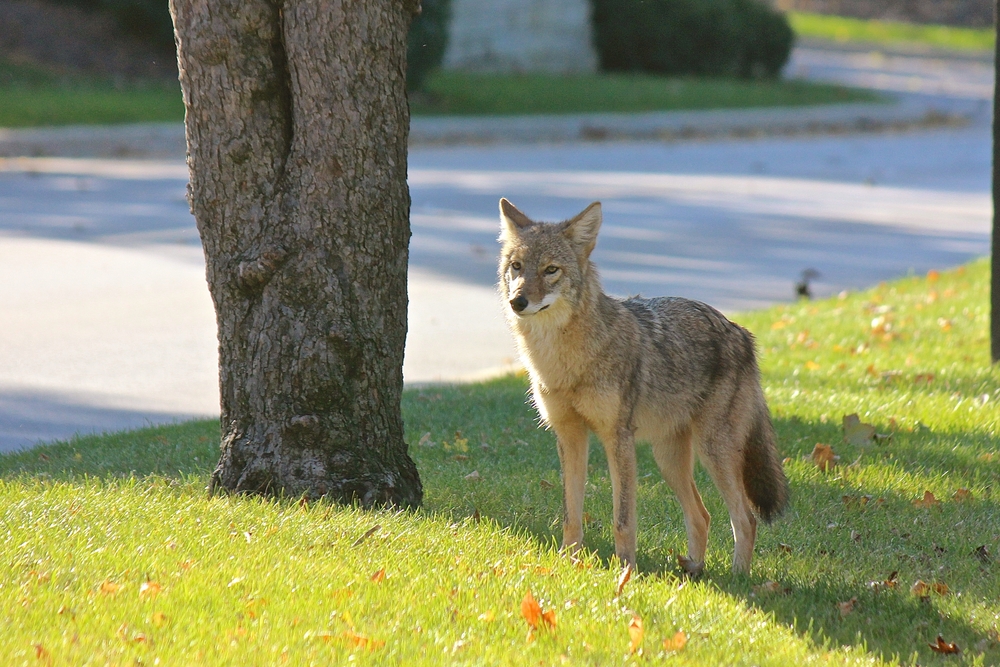
First, if you have small pets, you should always be vigilant. Coyotes are opportunistic feeders; in some unfortunate cases, small dogs and cats can become targets. It might sound dramatic, but leaving your pet unattended outdoors, especially during dawn or dusk, is like rolling the dice. According to Coyote Smart, coyotes are most active during these times, often referred to as crepuscular hours. Secure your yard with a tall fence and consider using coyote rollers to prevent them from climbing over.
When taking your dog for a walk, keep them on a leash, especially in areas known for coyote activity. Even larger dogs aren’t entirely safe, as coyotes can be bold and aggressive if they feel threatened or are protecting a den. It’s also wise to avoid retractable leashes, as they can give your pet too much freedom to wander. Always check your surroundings, especially in areas with dense brush or cover where a coyote could be hiding.
2. Secure Your Trash
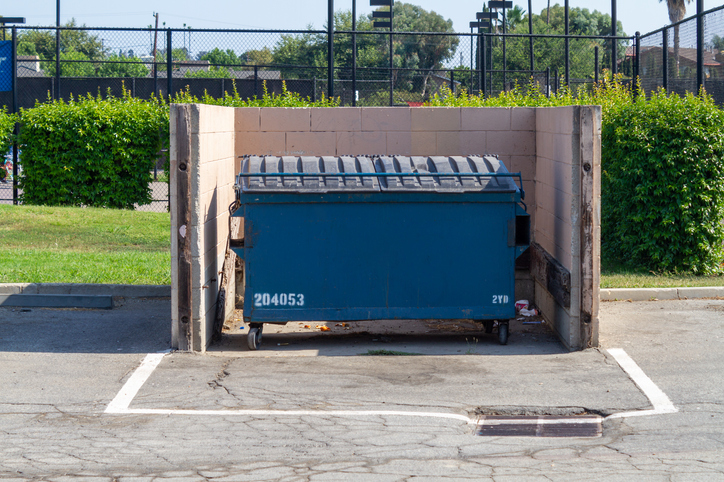
Coyotes, much like raccoons, have a knack for scavenging garbage. Leaving your trash unsealed, especially if it contains food scraps, is practically an open invitation for these curious creatures. Coyote Proof recommends that you secure your trash bins with tight-fitting lids or use straps designed to keep critters out. Some communities even offer wildlife-resistant trash bins, which can be a worthwhile investment.
Regularly clean your trash area to remove any residual smells that might attract coyotes. If possible, store your bins in a shed or garage until collection day. This not only reduces the risk of coyotes but also prevents other animals from tipping over your bins. A clean yard free of food waste is the first step to keeping unwanted wildlife away from your home.
3. Don’t Feed the Coyotes

It might be tempting to toss out scraps for the “cute” coyote you see passing through, but this is a big no-no. Feeding coyotes, either intentionally or accidentally, causes them to lose their natural fear of humans. This can lead to more aggressive behavior as they begin to associate people with food. If you want to admire these animals, do so from a distance and without offering food.
Wildlife feeding can also disrupt the natural hunting patterns of coyotes, leading to overpopulation and increased encounters in urban areas. Remember, a fed coyote is a dead coyote. Once they lose their wariness of humans, they often have to be relocated or euthanized for public safety reasons. So, keep your snacks to yourself, and let nature take its course.
4. Install Motion Sensor Lights

Coyotes are generally wary of light and sudden movements. Installing motion-activated lights around your property can serve as an effective deterrent. These lights can startle coyotes, making them think twice about approaching your home. Place these lights in strategic areas such as near trash bins, pet areas, or any potential entry points to your yard.
In addition to lights, consider using noise-making devices or sprinklers that can be triggered by motion. These can further discourage coyotes from lingering too long in your area. The key is to create an uncomfortable environment that encourages them to move on. However, be mindful of your neighbors and ensure your deterrents aren’t causing a nuisance for others in the community.
5. Educate Your Kids

Children are naturally curious and may not understand the potential danger posed by coyotes. It’s important to educate them about not approaching or attempting to feed wild animals. Teach them to recognize a coyote and to never run away from one, as this can trigger a chase instinct. Instead, they should stand tall, make loud noises, and slowly back away to a safe location.
Reinforce the idea that coyotes are not like the friendly dogs they may know. Encourage supervised outdoor play, especially during the early morning and late evening hours when coyotes are most active. By instilling these habits early, you can help prevent potential dangerous encounters and foster a healthy respect for wildlife among your children.
6. Use Fencing Wisely
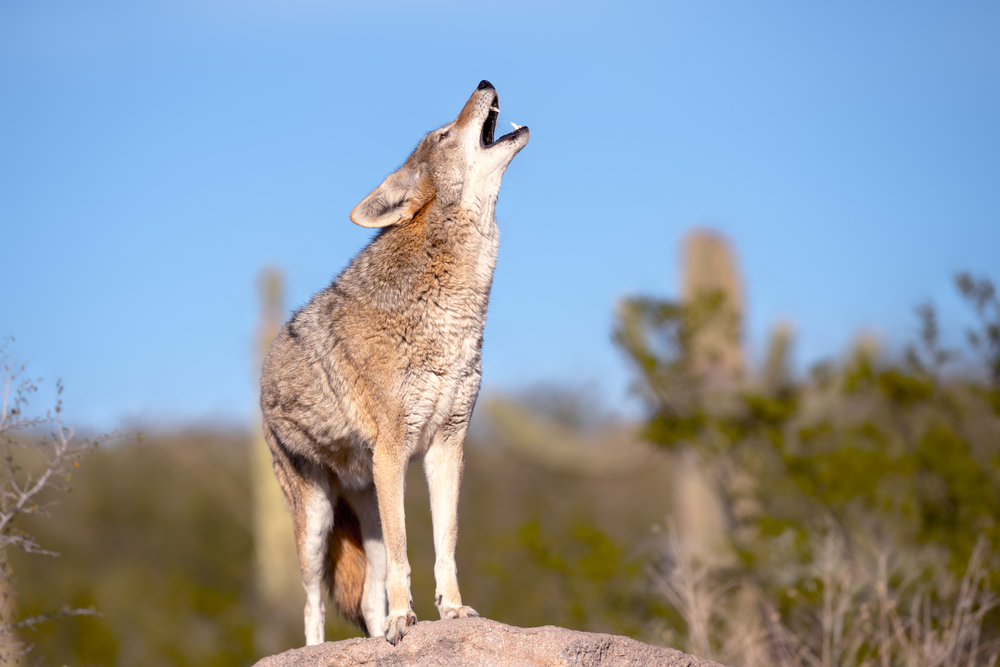
A good fence can be your first line of defense against curious coyotes. However, it’s important to choose the right kind of fencing. Coyotes are excellent jumpers and climbers, so your fence should be at least six feet tall. Add coyote rollers or angled extensions on top to prevent them from scaling it.
Ensure there are no gaps or weak spots in your fencing that a coyote could squeeze through. Regularly inspect and maintain your fence to ensure its effectiveness. If you have a gated entry, make sure it closes securely without leaving space for a coyote to slip underneath. A well-fortified yard is an essential step in creating a safe environment for your household and pets.
7. Reduce Attractants
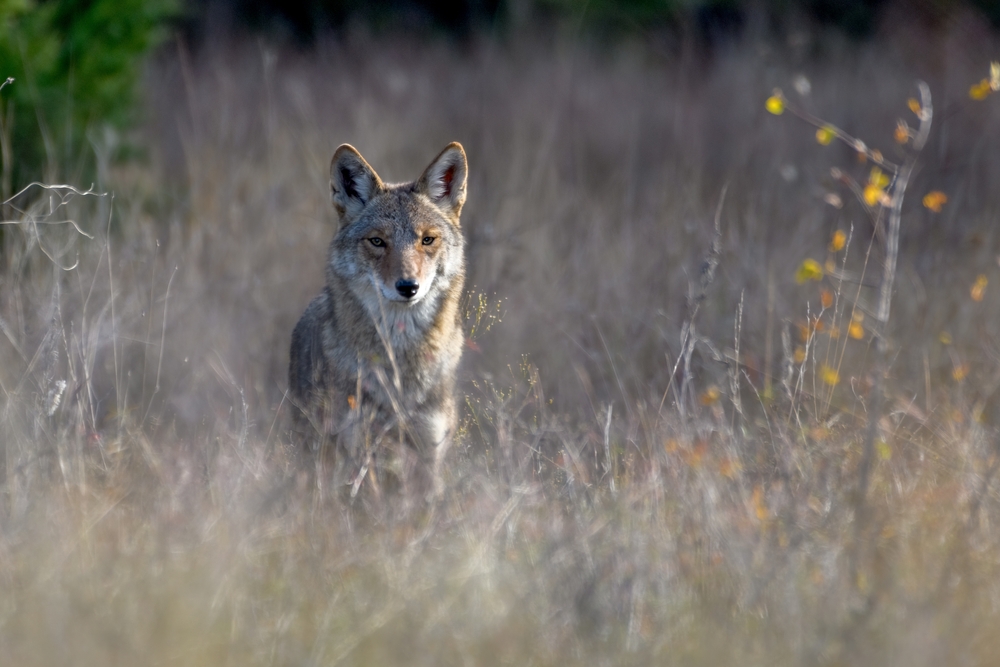
Coyotes are drawn to areas where food is plentiful. This includes pet food left outside, fallen fruit from trees, and even birdseed. Make sure to clean up any food remnants and avoid leaving pet food outdoors overnight. If you have fruit trees, regularly pick up any fallen fruit to reduce temptation.
If you enjoy feeding birds, use specialized feeders that minimize spillage and avoid feeding during peak coyote activity times. Removing these potential food sources can make your property less appealing to coyotes. It’s all about discouraging them from making regular visits to your yard in search of an easy meal.
8. Keep a Whistle Handy

Having a loud noise-making device such as a whistle or air horn can be an effective way to scare off a coyote. These animals are generally frightened by unexpected loud noises, and a quick blast can send them running. Keep a whistle attached to your keychain or near your back door for easy access in case you spot a coyote nearby.
These tools can also be useful on walks or hikes, especially in areas with known coyote presence. It’s a simple, non-lethal way to assert yourself and make coyotes reconsider approaching you. Using sound as a deterrent helps reinforce their natural wariness of humans, which is beneficial for both your safety and theirs.
9. Understand Coyote Behavior
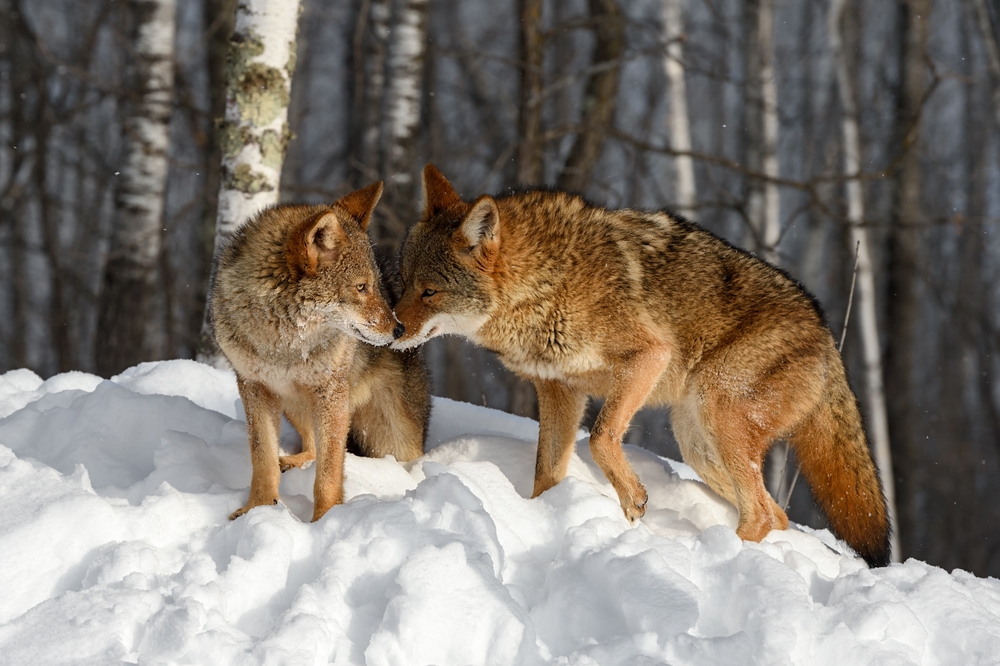
Coyotes have distinct behaviors and understanding these can help you coexist more safely. They are territorial animals with a strong family structure, often living in small family groups. Knowing their habits, such as being most active during dawn and dusk, can help you adjust your own routines.
Coyotes communicate with howls and yips to establish territory and locate family members. If you hear them, it’s often just a sign of them going about their natural business. However, if encounters become frequent or aggressive, it may be time to contact local wildlife authorities for advice or assistance. Understanding their behavior can help you assess situations more accurately and react appropriately.
10. Consult with Neighbors

When living in a community near coyotes, collective awareness and action can be very effective. Talk to your neighbors about coyote sightings and any preventative measures they’re taking. A coordinated effort can help reduce attractants and reinforce deterrence strategies across a wider area.
Discussing experiences and sharing tips can also help alleviate fears and misconceptions about these animals. Being on the same page creates a community-wide approach to managing coyote presence, which can be far more effective than individual efforts. Remember, the goal is to create an environment where coyotes feel unwelcome without harming them.
11. Beware of Den Sites
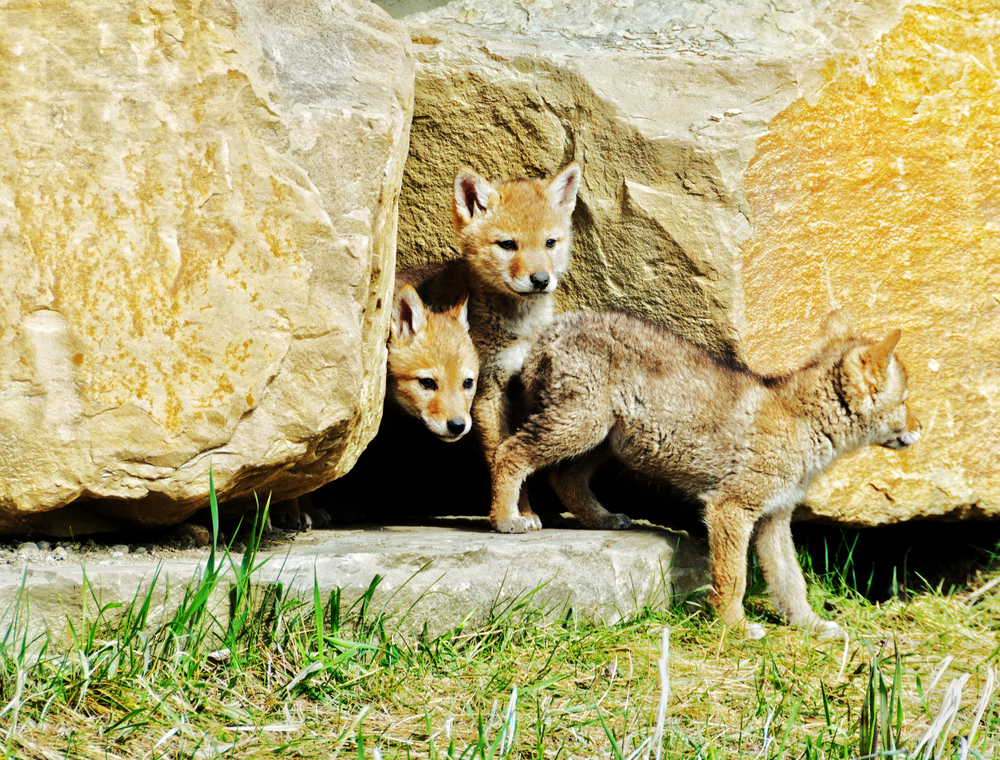
Coyotes may choose to den in areas that provide ample cover and are away from human traffic. Be mindful of potential den sites such as under porches, in dense shrubbery, or in abandoned lots. If you suspect a coyote den is nearby, it’s crucial to give it a wide berth and limit activity in that area.
Coyotes can become more aggressive if they feel their den is threatened, particularly during pup-rearing season. Alert local wildlife services if you find a den in a problematic area. They can provide guidance on how to safely manage the situation. Avoiding den areas helps reduce potential conflicts and keeps both humans and coyotes safe.
12. Engage with Local Wildlife Services
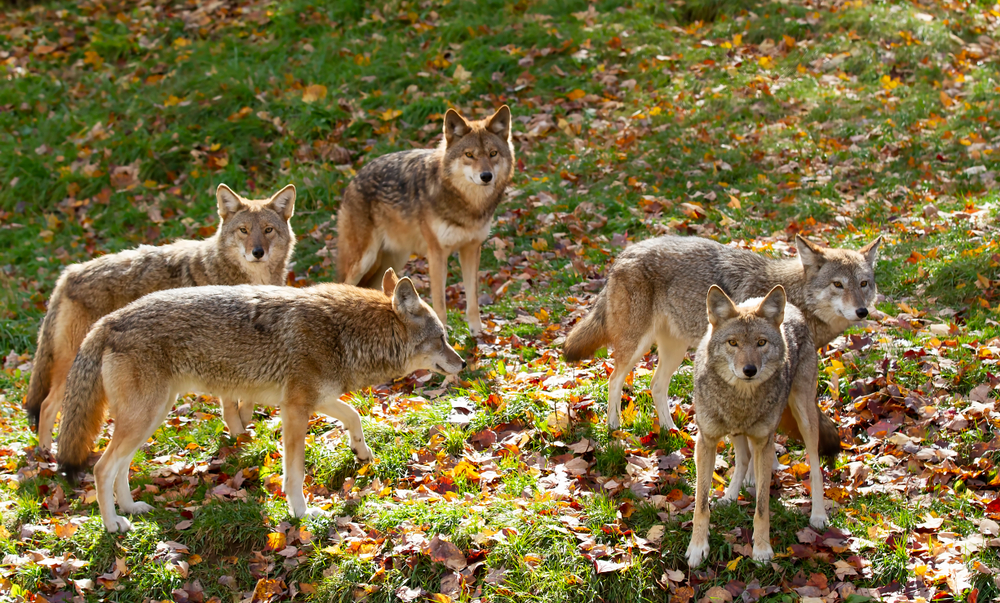
Local wildlife services can be a valuable resource for information and assistance when dealing with coyotes. They often have educational materials and can offer advice tailored to your specific community. If coyotes become a persistent problem, they can evaluate the situation and recommend appropriate actions.
Engaging with these services also helps keep records of coyote activity, which can be beneficial for long-term community planning. They can provide insight into whether certain behaviors are typical or indicative of a larger issue. Having professionals on your side ensures a balanced approach to wildlife management and safety.
13. Stay Calm During Encounters
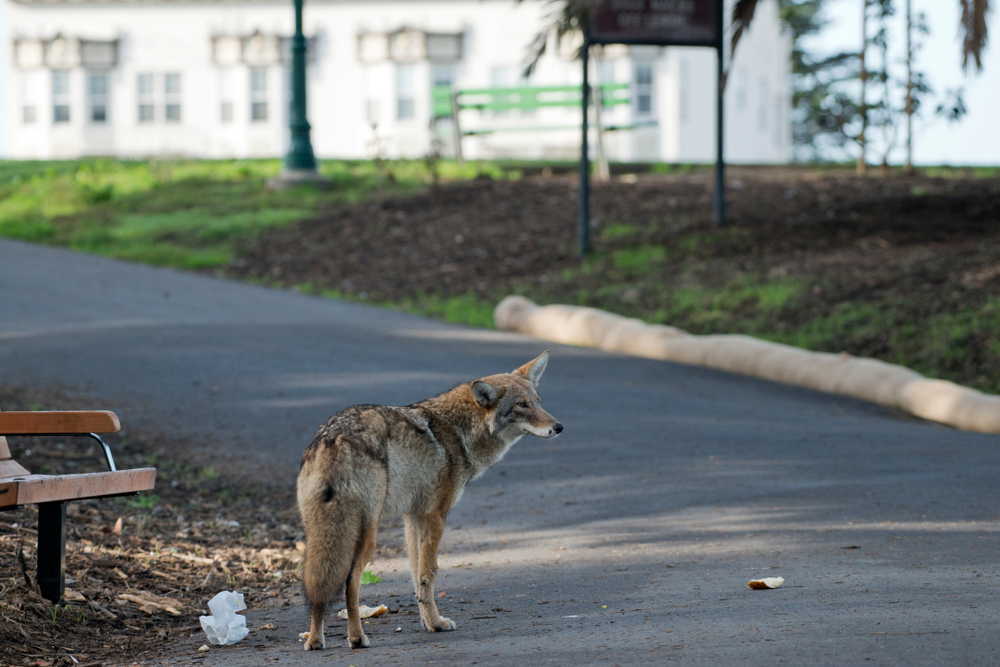
If you do encounter a coyote, it’s important to remain calm and assertive. Make yourself appear larger by standing tall and waving your arms. Use loud noises to scare the coyote away, such as clapping your hands, shouting, or using a whistle. Back away slowly without turning your back to the animal.
Never run away, as this can trigger a chase response. Most coyotes will retreat when they sense you’re not a threat but also not prey. The key is to establish boundaries and remind them that humans are to be avoided. This not only protects you but helps maintain a healthy fear of humans in the coyote population.
